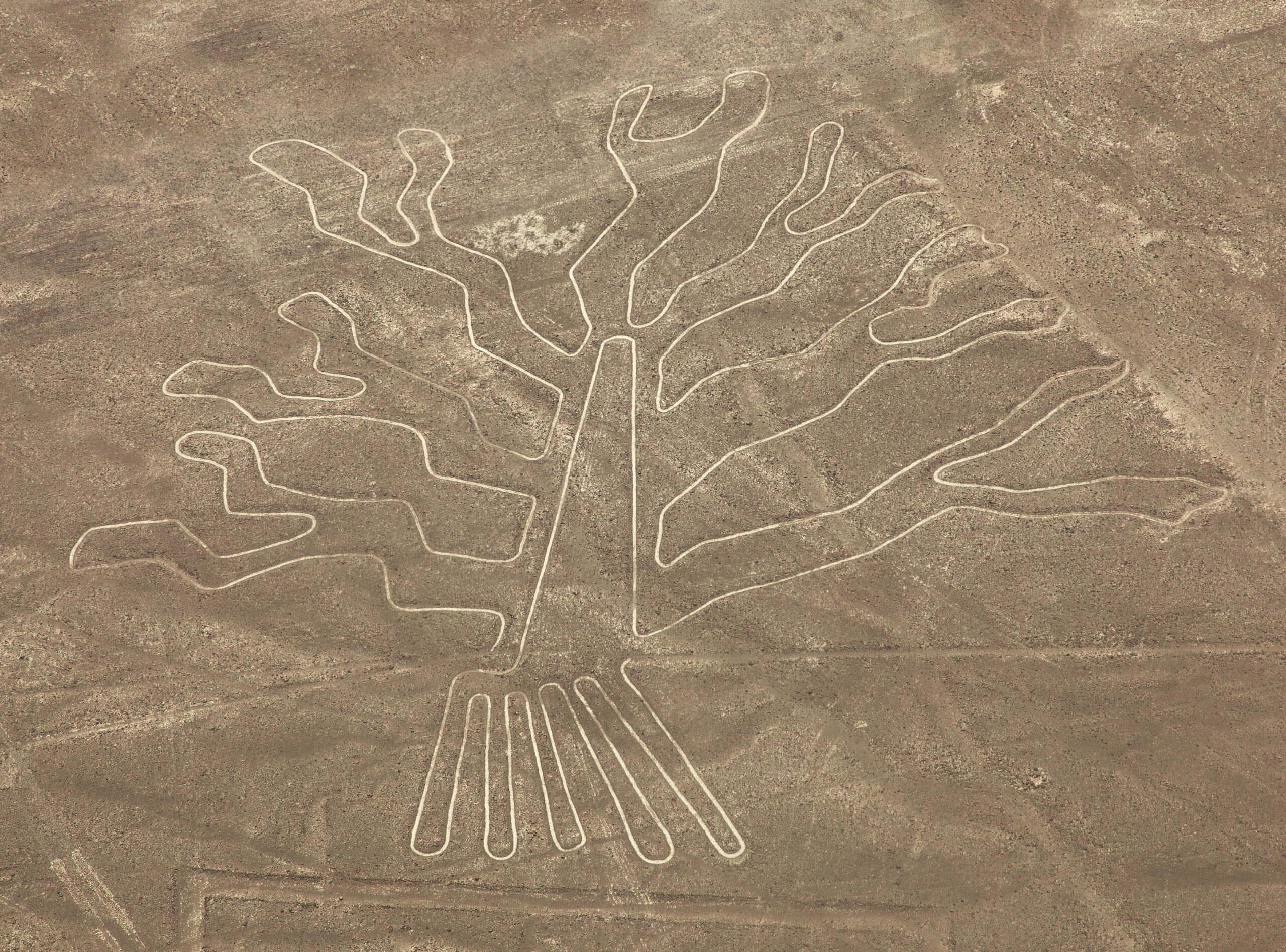Peru’s Nazca Desert draws 300,000 visitors annually to witness monumental geoglyphs that remain invisible from ground level. This peculiarity transforms an arid plateau in southern Peru into a playground for Cessnas and wild theories. The figures span 174 square miles between the towns of Nazca and Palpa, 250 miles south of Lima.
UNESCO classified the site in 1994, but protection remains challenging against urban development and occasional looters. The Nazca people carved these lines between 500 BC and 500 AD, never able to admire their work in its entirety. An irony that still fuels debate.
Flight Tours: The Only Way to Grasp the Site’s Scale
Local airlines have turned overflights into an industry. About ten operators offer 30 to 90-minute tours from María Reiche airfield, 2.5 miles from Nazca. Cessna 207s remain the most common aircraft, with high wings that facilitate observation. Pilots bank the plane 30 degrees on each side so all passengers can see the figures. This aerial gymnastics causes nausea in roughly a third of passengers.
Flights depart throughout the day, but low morning light (before 10am) enhances contrasts. In the afternoon, thermal turbulence shakes small aircraft more severely. Prices vary by season and flight duration. Some operators also offer departures from Pisco or Ica to avoid the seven-hour drive from Lima. The standard circuit flies over about a dozen main figures.
Accidents remain rare but significant. In 2022, seven tourists died in a Cessna crash. Peruvian authorities have since tightened controls, but some companies continue flying worn-out aircraft. Checking recent reviews and avoiding operators with suspiciously low prices remains wise.

The Geoglyphs: Inventory and Ground-Level Access
The site contains approximately 300 geometric figures, 70 animal and plant drawings, and thousands of straight lines. The hummingbird measures 315 feet, the spider 154 feet, the monkey 361 feet. The condor stretches 440 feet across. These dimensions explain why Maria Reiche, the German archaeologist who devoted 50 years to their study, used a ladder and later a helicopter.
The 43-foot metal tower built in 1976 along the Pan-American Highway provides partial views of three figures: the tree, the hands, and the lizard cut in half by the road. The experience disappoints after seeing aerial photos in guidebooks. The viewing height is too low and the angle inadequate. Visitors rarely spend more than 10 minutes here.
Drones revealed 168 new geoglyphs between 2019 and 2020. Artificial intelligence now helps archaeologists spot faded tracings. Some figures measure less than 33 feet and depict warriors or llamas. These discoveries challenge the astronomical calendar theory popular in the 1970s.
The lines resist time thanks to the climate. This region receives less than 30 minutes of rain per year. The soil, a mix of dark pebbles and light sand, preserves the trace of the slightest passage. The Nazca simply moved oxidized stones to reveal lighter sand underneath. The technique seems simple, but the results have lasted centuries.
Alternative Theories: From Astronomical Calendar to Alien Landing Strips
The absence of a definitive explanation has fueled speculation for 80 years. Erich von Däniken popularized the extraterrestrial theory in 1968 with his book “Chariots of the Gods.” According to him, the lines served as landing strips for spacecraft. The hypothesis conveniently ignores that the sandy soil couldn’t support any heavy craft and that aliens capable of interstellar travel wouldn’t need such basic visual markers.
Maria Reiche defended the giant astronomical calendar theory. Some lines do point toward stellar positions, but archaeologists have demonstrated that with thousands of lines oriented in all directions, the alignments remain statistically normal. The theory persists in tourist brochures nonetheless.
Anthropologists today favor ritual explanations. The lines supposedly served as ceremonial paths linked to water worship in this desert region. Pottery shards found along the tracings suggest processions. The animal figures would represent deities or local constellations.
Local guides adapt their explanations to their audience: scientific for academics, mysterious for New Age groups. Souvenir shops sell as many serious books as conspiracy theories. This ambiguity is part of the local business. The pilots themselves feed the folklore by pointing out “the astronaut” – an anthropomorphic figure that archaeologists identify as a fisherman with his net.
Nazca Town and Other Regional Sites
Nazca has 25,000 inhabitants accustomed to tourist traffic. The town centers around an unremarkable Plaza de Armas. Hotels cluster near the airfield and along the main avenue. Options range from basic hostels to lodges with pools. Air conditioning becomes necessary between December and March when temperatures exceed 95°F (35°C).
Restaurants mainly serve grilled chicken and standard Peruvian dishes. A few places attempt international cuisine with mixed results. Local pisco sour costs a third of Lima prices and helps digest the guides’ extraterrestrial theories.
The María Reiche Museum presents the German scientist’s research. The explanations remain technical but help understand construction methods. The adjacent planetarium screens a dated but informative documentary on the astronomical hypothesis. Combined admission remains affordable.
The Cantalloc aqueducts showcase Nazca hydraulic ingenuity. This underground canal system still functions after 1,500 years. Stone spirals allowed access for maintenance. The visit takes an hour and nicely complements the agricultural dimension of this civilization.
Chauchilla Cemetery displays mummies in their original positions. Looted tombs were reconstructed in the 1990s. Bodies retain their hair and tissues thanks to the dry climate. The macabre atmosphere appeals to fans of authentic sites. The 19-mile journey crosses monotonous desert.
The Palpa geoglyphs, 31 miles north, attract fewer crowds. Some figures date from the Paracas culture, which preceded the Nazca. The site includes complex human representations visible from surrounding hills. The absence of tourist infrastructure preserves the mysterious atmosphere.
Two days suffice to see the essentials if the overflight is booked. Three days allow adding peripheral sites without rushing. Rushed travelers settle for one day with a morning flight and evening bus. This option is exhausting but remains popular with backpackers. Organized tours from Lima include everything but limit freedom. The Nazca Desert deserves better than a quick stopover between selfies.

